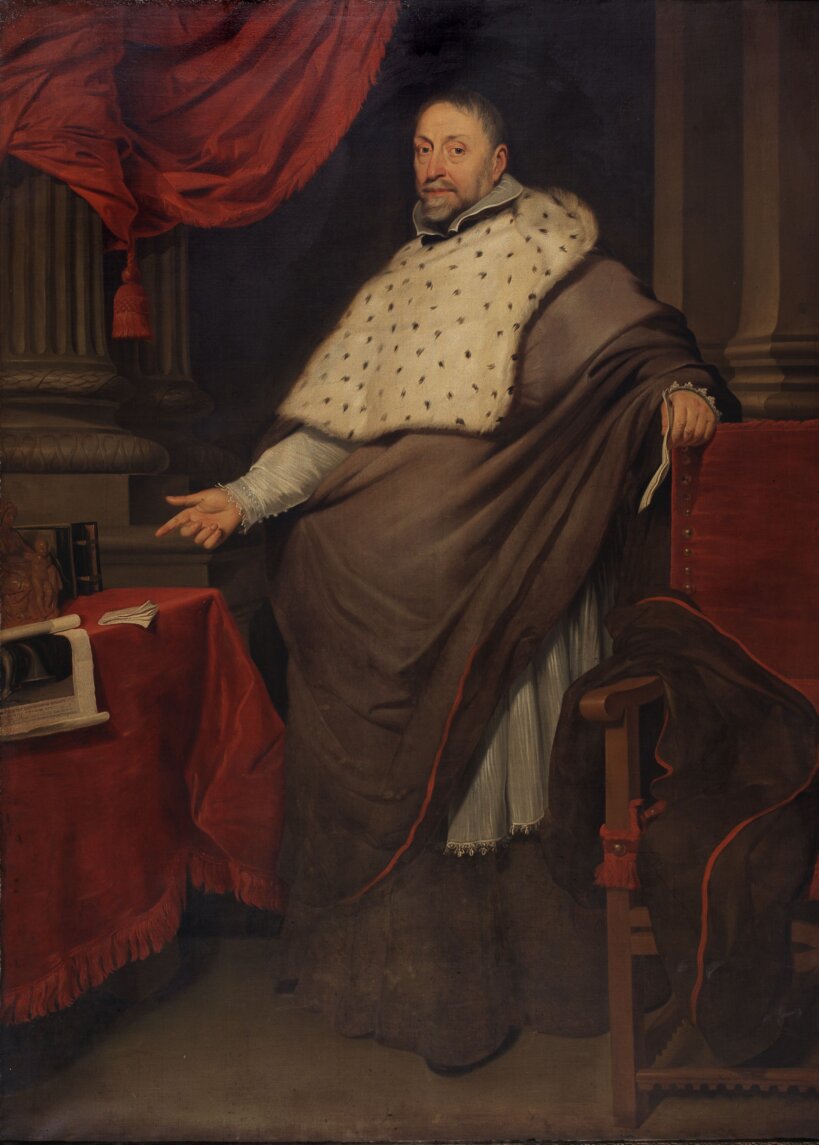City of Ghent, Belgium, rejects Restitution Claim for De Crayer Painting

After thorough investigation, an independent committee unanimously concluded that there are no grounds for restitution of the painting ‘Portrait of Bishop Antonius Triest’ by Gaspar de Crayer to the heirs of art dealer Samuel Hartveld. On 20 November 2025, the City of Ghent decided to follow that advice.
On 3 October 2023, the MSK received a restitution claim for the painting Portrait of Bishop Antonius Triest (after 1630) by Gaspar de Crayer. The portrait is owned by the City of Ghent and is part of the MSK collection (inv. 1948-Z). The restitution claim led to an extensive investigation. The committee established that the painting was indeed confiscated by the occupying forces during the Second World War, but also concluded that Hartveld and his heirs had already been compensated for this in the years that followed. Therefore, there is no reason for restitution or compensation. The City and the MSK emphasise that the eventful provenance history will henceforth be explicitly mentioned in all publications and provenance information about the artwork.
The restitution claim was submitted on behalf of the Trust of the heirs and great-grandchildren of Antwerp art dealer Samuel Hartveld, who, together with his family, was a victim of Nazi persecution of Jews during the Second World War. As there is no overarching body in Belgium that deals with restitution claims, the City of Ghent decided on 28 November 2024 to appoint an independent ad hoc committee. This committee was tasked with gathering and investigating facts and coming up with a reasoned opinion, taking into account the international agreements on Nazi-looted art to which Belgium is a signatory.
They were provided with academic support by Amber Gardeyn, who is preparing a PhD thesis on restitution policy in Belgium compared to the Netherlands.
Geert Sels' research for his book Kunst voor das Reich (Tielt: Lannoo, 2022) had already shown that the Portrait of Bishop Antonius Triest was one of the 66 paintings that Hartveld left behind in Antwerp when he fled to New York in 1940. They were seized by the occupying forces and sold in 1942 to the young Antwerp restorer René Van de Broek, who resold the Portrait of Bishop Antonius Triest to the City of Ghent in December 1948. There is therefore no doubt that the work was “spoliated” (in other words, taken from its owner under pressure during wartime). However, it remained unclear for a long time whether Hartveld had already received compensation for the loss of the collection, and specifically for this portrait.
The committee members gathered a large amount of new information about what happened in the period after the Second World War. They were able to draw on their extensive knowledge of the trade in old art, the post-war (inter)national services responsible for war damage and war victims, and the archives, legal proceedings, notarial deeds and inheritance issues from this period. Based on nine months of intensive research, the committee presents a 20-page reconstruction of the facts in its advisory report and unanimously reaches the following conclusion:
- Although the painting, originally owned by Samuel Hartveld, was placed under Verwaltung during the Second World War and can therefore be considered spoliated cultural property, it can nevertheless be inferred from various consistent and serious factual suspicions that the original owner (and his direct heirs) already received compensation for the spoliation in the years after the Second World War, so that there is no reason to award restitution or financial compensation to the heirs in 2025.
- The fact that financial compensation has already been provided does not alter the fact that Samuel Hartveld, as an art dealer, was the victim of a clear act of spoliation. The Committee therefore recommends that some form of moral redress be provided, in particular by expressly mentioning the unacceptable act of spoliation in the provenance history when exhibiting and publishing the Portrait of Bishop Antoon Triest.
Based on the findings of the advisory committee, on 20 November 2025 the City of Ghent decided to follow the committee's recommendation that the work should not be restituted to the heirs of the late Samuel Hartveld.
The full report and recommendation is available here in English.
Main Image:Portrait of Bishop Antonius Triest (after 1630) by Gaspar de Crayer, MSK Ghent
